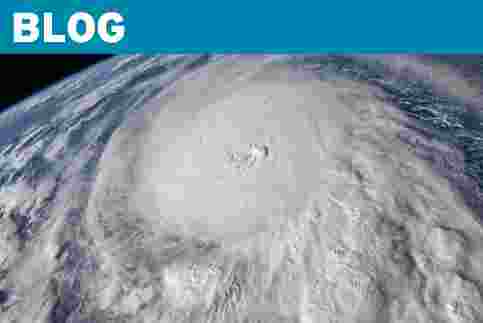Jakarta, Indonesia’s capital, is one of the largest cities in the world. However, frequent flooding continues to result in significant economic losses and casualties. One of the most severe events in recent years was the 2007 floods, which resulted in 57 deaths and 420,000 people being displaced (ReliefWeb 2013). More recently, the 2013 floods inundated the central business district (CBD), homes close to the river banks and the Merdeka presidential Palace (Jensen & Rahadiana 2013; Vaswani 2013).
The geographical location of Jakarta is a key factor in its flood risk- it lies on a deltaic floodplain and has 13 rivers flowing into the metropolitan area. The headwaters of these rivers are the southern highlands of western Java. Likewise, the coastal regions in Jakarta are highly susceptible to flooding due to land subsidence. The northern Jakarta region is estimated to be sinking at approximately 15-25cm every year (The World Bank 2016). Between 1974–2010, northern Jakarta subsided by approximately 4.1m, while eastern and western regions of the city subsided by approximately 1.4m and 2.1m respectively (Global Facility for Disaster Reduction and Recovery 2013). This is predominantly due to rapid removal of freshwater from the aquifers beneath the city as inhabitants create illegal wells to access the water. Although Jakarta experiences high annual rainfall totals (~1855mm), the aquifers are not fully recharged, a problem exacerbated by the urban land cover (Climate-Data.org 2018; Kimmelman 2017; Lyons 2015).
 Figure 1: Illustration of Jakarta 2007 flood event which had a 50-year return period. JBA Indonesia River Flood Maps (50-year Return Period) are provided for context (JBA Risk Management Limited).
Figure 1: Illustration of Jakarta 2007 flood event which had a 50-year return period. JBA Indonesia River Flood Maps (50-year Return Period) are provided for context (JBA Risk Management Limited).
2007 Jakarta Floods
Torrential rain from 29 January-2 February 2007 resulted in a 1-in-50-year flood event in Jakarta. Around 75% of Jakarta city was inundated, resulting in 57 deaths and more than 400,000 people affected. The economic losses totalled USD 900 million (Mohsin 2015). At some locations, water depths reached 4m, with the flooded roads making it hard to undertake rescue operations and for people to get to work. Flood-related insurance claims totalled approximately USD 140 million (ReliefWeb 2013).
2013 Jakarta Floods
A total of 629mm of precipitation fell on Jakarta in January 2013, setting the record for the highest rainfall received in the month of January during a 25-year period (1984 – 2009) (UNESCO Jakarta 2013). At least 175mm fell in west Jakarta within 5 hours on 17 January 2013 (Jensen & Rahadiana 2013). The rainfall event was classified with a 30-year return period.
Prolonged torrential rain caused rivers to overflow their banks. For instance, the Ciliwung and Cikeas rivers could not contain the high volume of water and inundated houses close to east Bekasi. For some houses, the flood waters reached heights of 2m-5m. Due to the prolonged rainfall in mid-January, rivers and dams reached critically dangerous levels, causing authorities to open various floodgates, including a main one in the city of Jakarta. This caused a 50m portion of river channel to collapse and inundated the CBD area of Jakarta, including the major Hotel Indonesia Roundabout.
The floods in 2013 forced businesses in the CBD and governmental agencies to close, with flooding in central Jakarta resulting in significant economic losses as factories were inundated and businesses were affected from the stalled traffic and flooded roads. (Vaswani 2013). A total of 97,000 homes and 250,000 people were affected due to the flood (ReliefWeb 2013). The total economic losses and damages were at least USD 490 million (The World Bank 2016).
2014 Jakarta Floods
As well as events in 2007 and 2013, torrential rain also resulted in floods in Jakarta in January 2014. A total of 23 fatalities were reported and river banks reached water levels of 2m, with some instances of 4m at houses near the river banks. Other low-lying areas located close to the river were inundated to heights between 20cm and 1.2m.
Later that year, in May and November, there was further flooding, despite May typically being the dry season in Indonesia. The scale of these flood events was not comparable to the 2007 and 2013 events, but still caused significant damage to the city.
Future Outlook
Flooding is likely to continue to impact Jakarta in the future as poor management of the waterways and continued subsidence remain prominent issues.
Although measures implemented by the government have helped in recent years, such as dredging work undertaken in the Ciliwung River, relocation of illegal housing near flood-prone areas and construction of a seawall at Jakarta Bay (The World Bank 2016; Thin 2017), further mitigation measures will be required in the future as 40% of Jakarta is estimated to be below sea level (Kimmelman 2017).
In Indonesia, there is a large protection gap in terms of flood insurance. Non-life insurance penetration rate is at 0.43% of GDP, which is lower than that of neighbouring countries such Malaysia (1.32%). However, it’s worth noting that most of this insurance is concentrated in Jakarta. As Jakarta continues to undergo urbanisation and development, it is essential that further measures are taken to mitigate this flood risk.
JBA Risk Management has nationwide return period flood maps for Indonesia at 30m resolution. Please get in touch for further information.
